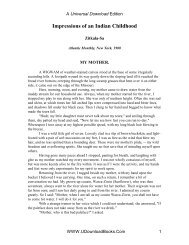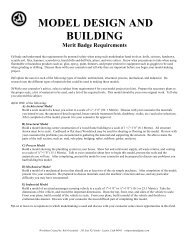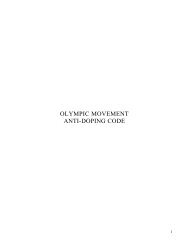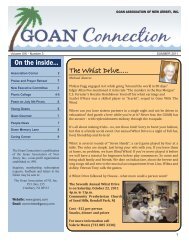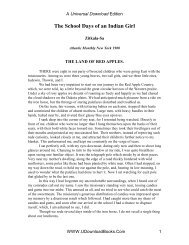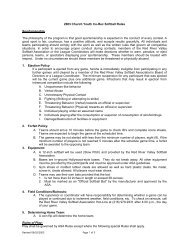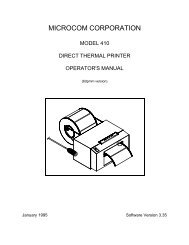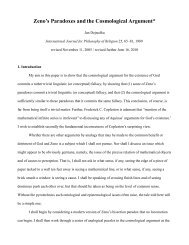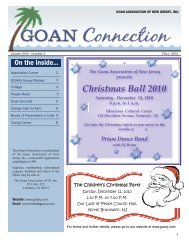Dummett's Backward Road to Frege and to Intuitionism - Tripod
Dummett's Backward Road to Frege and to Intuitionism - Tripod
Dummett's Backward Road to Frege and to Intuitionism - Tripod
You also want an ePaper? Increase the reach of your titles
YUMPU automatically turns print PDFs into web optimized ePapers that Google loves.
these three Principia senses of “intension.” I doubt even more that he distinguishes the corresponding<br />
three Principia senses of “extension.” In his <strong>Frege</strong> books, he introduces a single notion of extension in<br />
terms of both truth-functionality <strong>and</strong> opacity, blurring senses (1) <strong>and</strong> (2). The slip from sense (1) <strong>to</strong><br />
sense (2) is subtle:<br />
...are...extensional: that is, provided that the truth-value of a complex sentence depends<br />
only on the truth-values of the constituents....What happens, then, in a case in which a<br />
method of sentence-transformation is used which is not extensional: that is, when a<br />
sentence is formed which contains an opaque context? (Dummett 1981: 189–90, my<br />
emphasis; see 1981a: 155)<br />
But he does clearly identify intension in sense (2) in discussing intuitionism (2000: 16–17).<br />
For <strong>Frege</strong>, all sentential contexts, even opaque contexts, are extensional in sense (1). To<br />
preserve truth-functionality in opaque contexts, <strong>Frege</strong> introduces a systematic reference shift from<br />
cus<strong>to</strong>mary references <strong>to</strong> senses. Thus senses are extensional in sense (1). But senses are intensional in<br />
sense (2). That is the whole point of <strong>Frege</strong>’s explanation of informative identity statements. Namely,<br />
different names expressing different senses can refer <strong>to</strong> the same reference.<br />
All senses are intensional in sense (2), while all cus<strong>to</strong>mary, i.e., direct, references are<br />
extensional in sense (2). For any cus<strong>to</strong>mary reference, there are indefinitely many senses containing<br />
modes of presentation of that reference. Insofar as a reference is informatively identifiable indefinitely<br />
many times, there are indefinitely many senses through which it can be identified. Thus in general, the<br />
relation of a reference <strong>to</strong> the senses which are ways of identifying it is one-many. Thus it is magical <strong>to</strong><br />
suppose that starting from any given set of references, i.e., objects <strong>and</strong> functions, we can work back so<br />
as <strong>to</strong> determine any one sense in particular as the sense expressed by a name of any one of those<br />
10




